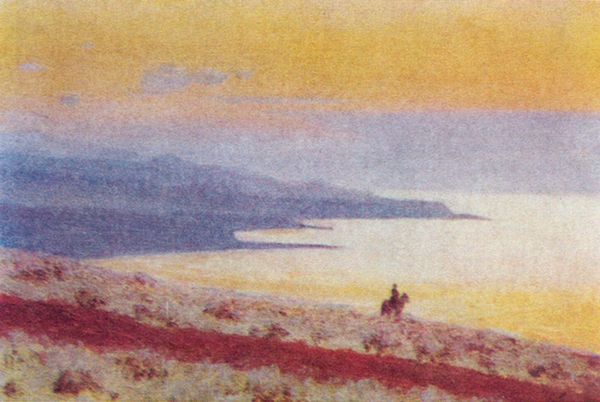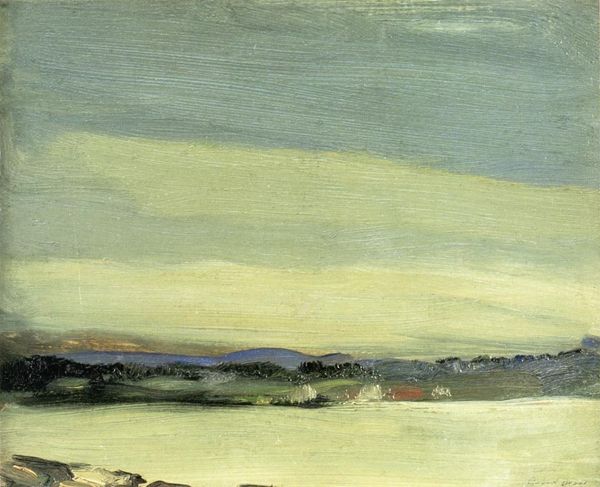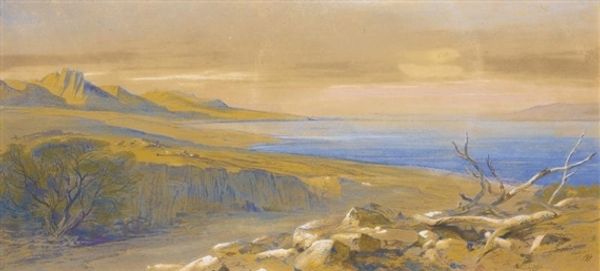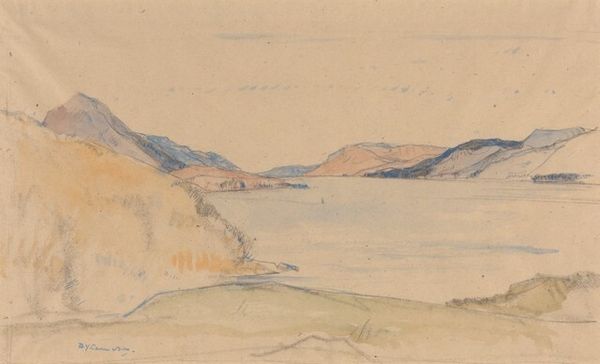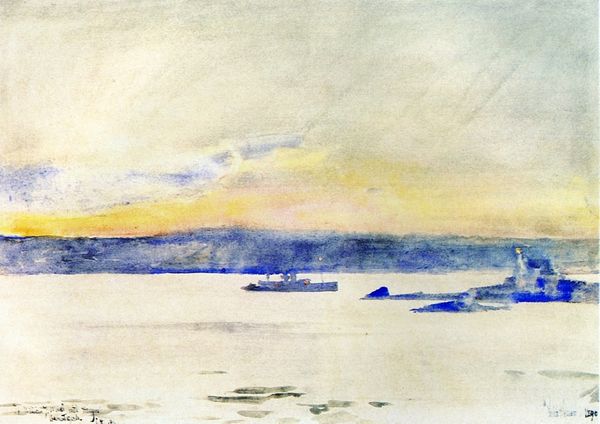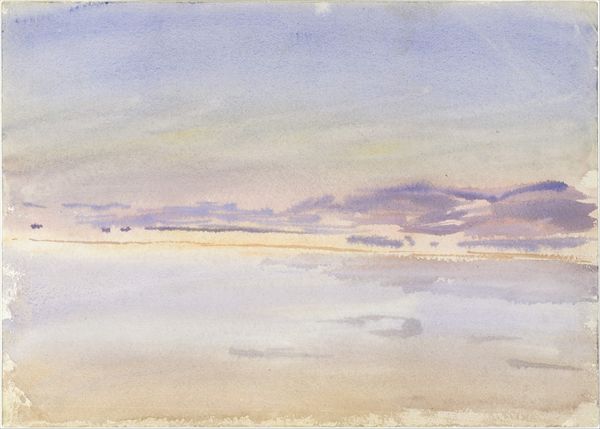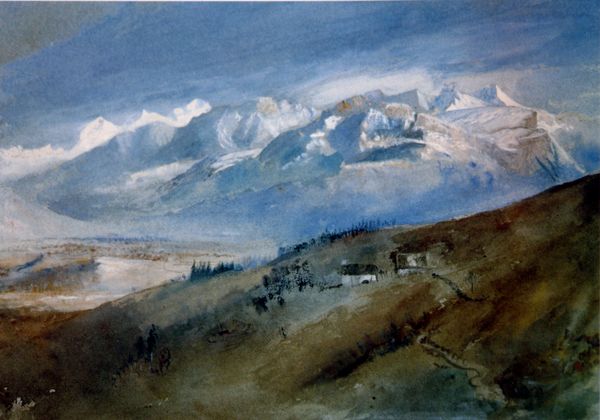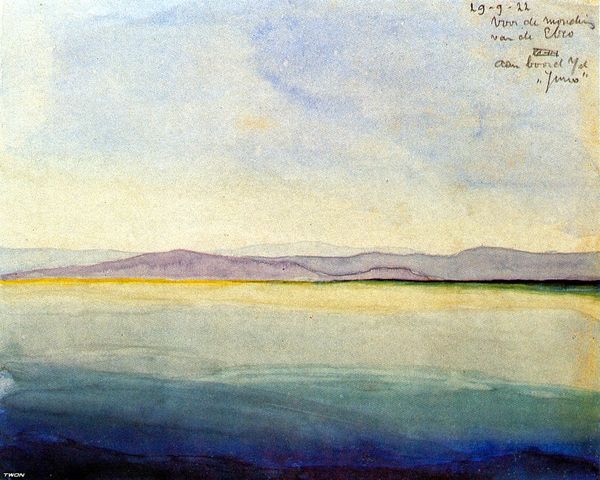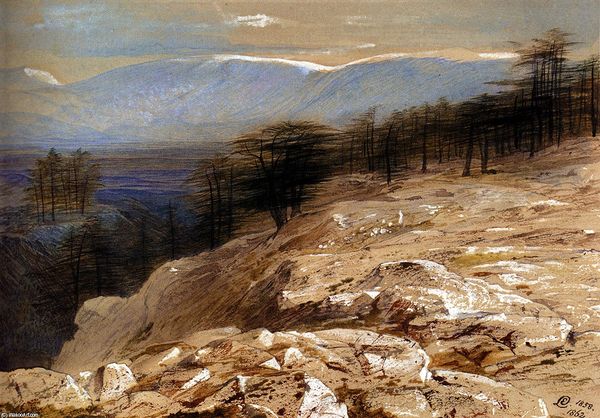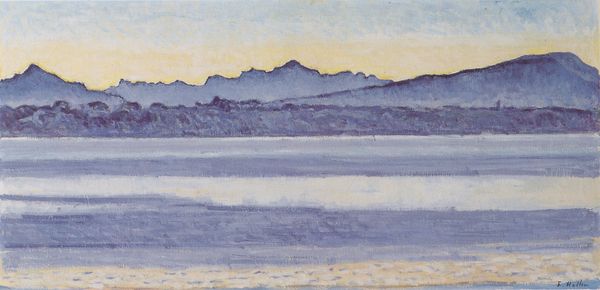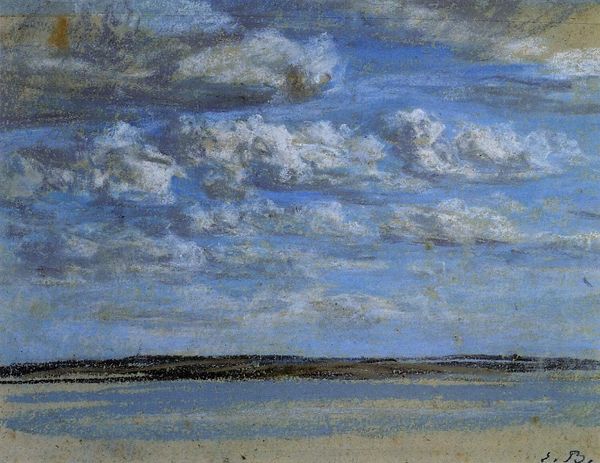
Copyright: Public domain
Editor: So, this is "Seascale," a watercolor landscape from 1889 by John Ruskin. It's… surprisingly vibrant for its age, almost dreamlike. What do you see when you look at it? Curator: Well, first, let's consider Ruskin's embrace of watercolor en plein air. This immediately connects the artistic process to a specific time, place, and environmental condition. What implications arise when we focus on how he was crafting art within a natural setting? Editor: That's interesting. I guess it challenges the idea of art as something purely intellectual or separate from physical labor. Curator: Exactly. Consider Ruskin's broader social critique. He saw beauty and value in handcraft, directly opposing the industrial revolution's devaluing of skilled labor. How does "Seascale," with its delicate washes and textures, embody this ethos? Editor: The handmade quality, right? It feels almost defiant, choosing painstaking detail over mass production. Do you think he's commenting on the environmental impact of industry, too, given it's a seascape? Curator: Possibly. Remember that Ruskin championed the Gothic Revival and saw beauty in the natural world as a form of spiritual and social remedy. What is the connection between the use of watercolor, this portable and immediate medium, and his social goals? Editor: So the portability and accessibility of the medium align with making art, and its appreciation, more democratic? It’s not some grand oil painting only the wealthy can afford to commission and house, right? Curator: Precisely! The materials themselves speak to a broader democratizing impulse. Also, watercolor production then, and even now, relied upon pigment sourcing that was fraught with colonialism. Where did the raw materials come from? Who did the labor to harvest them? And what impact did that process have on local communities? Editor: Wow, I hadn't considered that! I guess thinking about materials really opens up a whole new perspective. Thanks, I will always remember the question "where did the raw materials come from and who harvested them?". Curator: Indeed. Seeing art through a materialist lens exposes the complex networks of labor, consumption, and ideology embedded within even the simplest landscape.
Comments
No comments
Be the first to comment and join the conversation on the ultimate creative platform.
